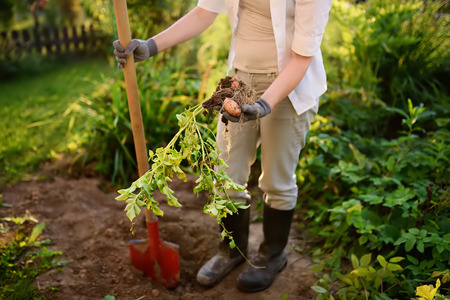Understanding Companion Planting Basics
Companion planting is a time-tested gardening technique where certain plants are grown together to support each others growth. Its like creating a neighborhood of friendly plants that help one another thrive. This method isnt just about saving space—its about making your garden healthier, more productive, and less reliant on chemicals.
What Is Companion Planting?
At its core, companion planting is the practice of placing specific plants near each other because they benefit one another in some way. These benefits can include repelling pests, improving soil nutrients, enhancing flavor, or providing shade or support.
How Companion Planting Works
Plants interact with their environment and neighboring plants in many ways. Some release natural chemicals that deter harmful insects, while others attract beneficial pollinators. Some have deep roots that break up compacted soil, helping nearby shallow-rooted plants grow better. By understanding these relationships, gardeners can create a more balanced and self-sustaining garden ecosystem.
Common Companion Planting Benefits:
| Benefit | Description |
|---|---|
| Pest Control | Certain plants repel unwanted insects or attract beneficial ones that eat pests. |
| Improved Growth | Some plant pairings promote faster or healthier growth by sharing nutrients or offering shade/support. |
| Soil Health | Legumes like peas and beans fix nitrogen in the soil, benefiting nearby plants. |
| Flavor Enhancement | Herbs like basil can enhance the flavor of neighboring veggies like tomatoes. |
Why Companion Planting Matters
For American home gardeners, companion planting is especially helpful for reducing the need for synthetic pesticides and fertilizers. Its an eco-friendly approach that promotes biodiversity and supports local pollinators like bees and butterflies. Plus, it helps maximize your harvest by making better use of garden space and encouraging stronger plant development.
A Few Popular Companion Pairings:
| Plant | Companion(s) | Benefit |
|---|---|---|
| Tomatoes | Basil, Marigolds | Basil improves flavor; marigolds deter pests. |
| Carrots | Onions, Rosemary | Deter carrot flies and improve growth. |
| Cucumbers | Nasturtiums, Dill | Dill attracts beneficial insects; nasturtiums trap pests. |
This basic understanding of companion planting sets the stage for designing a garden layout that’s not only efficient but also naturally resilient. In the next section, well dive into how to plan where everything goes for the best results.
2. Popular Companion Combinations and Their Benefits
Companion planting is all about choosing the right plant neighbors to help each other grow better, stay healthy, and even taste better. Below are some tried-and-true pairings that many home gardeners in the U.S. swear by. These combinations not only improve growth but also help with natural pest control.
Tomatoes and Basil
This classic duo is a favorite among gardeners—and chefs! Planting basil near your tomatoes can help enhance the flavor of the tomatoes and may repel pests like aphids, whiteflies, and hornworms. Plus, their similar growing needs make them easy to care for together.
Benefits:
- Improves tomato flavor
- Repels common tomato pests
- Maximizes garden space with compact growth
Corn, Beans, and Squash (The Three Sisters)
This Native American planting trio has stood the test of time. Corn provides a natural pole for beans to climb. Beans fix nitrogen in the soil, which benefits both corn and squash. Squash vines sprawl across the ground, helping to suppress weeds and retain moisture.
Benefits:
| Plant | Role | Benefit Provided |
|---|---|---|
| Corn | Support structure | Gives beans something to climb |
| Beans | Nitrogen fixer | Adds nutrients to the soil |
| Squash | Ground cover | Suppresses weeds and retains soil moisture |
Carrots and Onions
This combo works well because onions naturally deter carrot flies while carrots dont compete much for nutrients or space. They both grow underground but at different depths, making them great space-saving partners.
Benefits:
- Onions repel carrot flies
- No competition for root space or nutrients
- Efficient use of garden rows
Other Great Companion Combos to Try:
| Pairing | Main Benefit |
|---|---|
| Cucumbers & Nasturtiums | Nasturtiums attract aphids away from cucumbers and add color to the garden. |
| Lettuce & Radishes | Radishes mature quickly and break up soil for slower-growing lettuce. |
| Cabbage & Dill | Dill attracts beneficial insects that prey on cabbage pests. |
These companion planting combinations are just the start. Mixing plants thoughtfully can lead to a healthier garden thats more productive and easier to manage—naturally!
![]()
3. Garden Layout Planning for Different Spaces
Designing your garden layout with companion planting in mind can help you make the most of your space—whether youre working with raised beds, in-ground plots, or even small container gardens on a patio. Let’s break down how to plan your garden layout effectively based on the type of space you have.
Raised Beds
Raised beds are perfect for organizing plants and managing soil quality. With companion planting, you can group beneficial plant partners together to maximize yield and minimize pests.
Tips for Raised Beds:
- Use square-foot gardening principles to allocate space efficiently.
- Plant taller crops like tomatoes or corn on the north side to avoid shading shorter companions.
- Group compatible plants like carrots and onions, or basil and tomatoes, in the same bed.
Example Layout:
| Bed Section | Plants | Companion Benefits |
|---|---|---|
| North Side | Tomatoes + Basil | Basil improves tomato flavor and repels pests |
| Middle Row | Carrots + Onions | Onions deter carrot flies |
| Front Edge | Lettuce + Marigolds | Marigolds repel aphids and attract pollinators |
In-Ground Plots
If youre working directly in the soil, you’ll need to pay attention to sun exposure, drainage, and spacing between rows. Companion planting helps optimize these larger spaces by reducing weed growth and enhancing soil health.
Tips for In-Ground Gardens:
- Create rows that group friendly plant combinations together, like beans with corn and squash (the “Three Sisters”).
- Add herbs like dill or cilantro among rows to attract beneficial insects.
- Rotate crops seasonally to avoid nutrient depletion and pest buildup.
The Three Sisters Method:
| Crop | Function |
|---|---|
| Corn | Provides structure for beans to climb |
| Beans | Add nitrogen to the soil for all plants |
| Squash | Covers ground to retain moisture and prevent weeds |
Container Gardens
If youre limited on space or working with a balcony or patio, container gardening is a flexible option. You can still apply companion planting principles even in pots and planters.
Tips for Container Gardening:
- Select compact plant varieties suitable for containers (e.g., bush beans, dwarf tomatoes).
- Combine herbs like rosemary, thyme, and sage in one pot—they enjoy similar growing conditions.
- Avoid overcrowding—make sure each plant has enough room for roots to grow.
Sample Container Combos:
| Container Type | Plants Included | Why It Works |
|---|---|---|
| Large Pot (18”+) | Dwarf Tomato + Basil + Marigold | Basil enhances tomato growth; marigold deters pests |
| Herb Planter Box | Sage + Thyme + Rosemary | All prefer dry soil and full sun—great companions! |
No matter what type of garden space youre working with, thoughtful planning using companion planting techniques will help you grow healthier plants and enjoy a more productive garden.
4. Crop Rotation and Seasonal Considerations
When planning your garden layout with companion planting in mind, its important not to overlook crop rotation and seasonal changes. These two factors play a big role in maintaining soil health, preventing pests and diseases, and supporting the success of your plant pairings.
Why Rotate Crops?
Crop rotation means changing the location of where you plant certain types of vegetables each year. Different crops pull different nutrients from the soil and attract different pests. By rotating them, you help balance nutrient use and break pest cycles. This works hand-in-hand with companion planting because healthy soil and fewer pests make for happier plant partners.
Benefits of Crop Rotation
- Improves soil fertility: Some plants, like beans and peas, fix nitrogen in the soil, making it richer for next seasons crops.
- Reduces disease risk: Many diseases live in the soil and target specific plant families. Rotating helps prevent build-up.
- Controls pests naturally: Insects often overwinter in the soil near their favorite host plants. Moving crops confuses them!
Grouping by Plant Families
A simple way to rotate crops is by grouping them into plant families. Here’s a quick guide to help:
| Plant Family | Examples | Rotation Tip |
|---|---|---|
| Nightshades | Tomatoes, peppers, eggplants, potatoes | Avoid planting in same spot more than once every 3 years |
| Legumes | Beans, peas | Add nitrogen to the soil—great to follow with heavy feeders like corn |
| Brassicas | Cabbage, broccoli, kale, cauliflower | Rotate to avoid clubroot and other common diseases |
| Cucurbits | Cucumbers, squash, melons, pumpkins | Move yearly to prevent vine borer buildup |
| Alliums | Onions, garlic, leeks | Benefit from well-drained soil; rotate to reduce root maggots |
Seasonal Considerations Matter Too
Your garden plan should also take into account what grows best during each season. Cool-season crops like lettuce and spinach thrive in spring and fall, while warm-season veggies like tomatoes and corn need summer heat. Planning around these seasons ensures that your companion planting combinations actually grow at the same time—and benefit each other.
Example Seasonal Companion Planting Chart
| Season | Main Crop | Companion Plants |
|---|---|---|
| Spring | Lettuce | Radishes, carrots, chives |
| Summer | Tomatoes | Basil, marigolds, onions |
| Fall | Kale | Dill, beets, nasturtiums |
Pro Tip:
If youre growing in raised beds or containers, crop rotation is still important! Just think of each bed as its own mini-plot and rotate accordingly year to year.
By combining smart crop rotation with seasonal awareness and companion planting strategies, youll set your garden up for long-term success—and healthier harvests.
5. Common Mistakes and How to Avoid Them
Companion planting can do wonders for your garden, but it’s easy to make mistakes that can hurt your plants rather than help them. Whether you’re new to gardening or have years of experience, being aware of common pitfalls can save you time, space, and frustration. Let’s look at some frequent errors in companion planting—and how to avoid them for a healthier, more productive garden.
Overcrowding Plants
One of the most common mistakes is planting too many crops in a small area. While companion planting encourages diversity, every plant still needs enough room to grow properly. When plants are overcrowded, they compete for sunlight, nutrients, and water—leading to stunted growth and increased disease risk.
How to Avoid:
- Follow spacing guidelines on seed packets or plant tags.
- Use raised beds or containers to create more defined growing areas.
- Plan your layout ahead of time using a garden planner or sketch.
Mismatched Pairings
Not all plants get along. Some combinations may stunt each other’s growth or attract pests. For example, beans and onions don’t mix well because onions can inhibit the growth of bean plants.
Common Bad Pairings:
| Plant | Should Not Be Planted With | Reason |
|---|---|---|
| Beans | Onions, Garlic | Alliums can stunt bean growth |
| Tomatoes | Corn | BOTH attract corn earworms and compete for nutrients |
| Carrots | Dill | Dill can overpower carrot growth as it matures |
How to Avoid:
- Research companion plant lists before planting.
- Keep notes from season to season about what worked and what didn’t.
- Avoid assuming all herbs benefit every vegetable—they don’t!
Ignoring Plant Needs
Just because two plants are good companions doesn’t mean they have identical care requirements. For example, rosemary and basil are both great companions for tomatoes, but rosemary prefers dry soil while basil likes consistent moisture.
How to Avoid:
- Group plants with similar light, water, and soil needs together.
- Create zones in your garden based on care requirements.
- If combining different needs, use containers so you can manage watering individually.
Lack of Planning for Growth Habits
Tall plants can accidentally shade smaller ones if not placed correctly. Vining plants like cucumbers or squash need space to sprawl or vertical structures to climb—without proper planning, they may overtake neighboring crops.
How to Avoid:
- Place tall crops like corn or sunflowers on the north side of your garden bed so they don’t block sunlight from shorter plants.
- Use trellises and cages for vining plants to keep them contained and upright.
- Check mature plant sizes before placing them next to each other.
Poor Timing with Succession Planting
If youre practicing succession planting—planting new crops as others finish—you’ll need to time everything right. Overlapping incompatible crops or failing to rotate families can lead to soil depletion and pest build-up.
How to Avoid:
- Create a seasonal planting calendar with estimated harvest dates.
- Avoid planting the same family (like nightshades) in the same spot back-to-back seasons.
- Add compost between plantings to refresh soil nutrients.
The Bottom Line:
A successful companion planting layout starts with knowledge and careful planning. By avoiding these common missteps—from overcrowding and mismatched pairings to poor timing—you’ll give your garden the best chance at thriving throughout the growing season.


